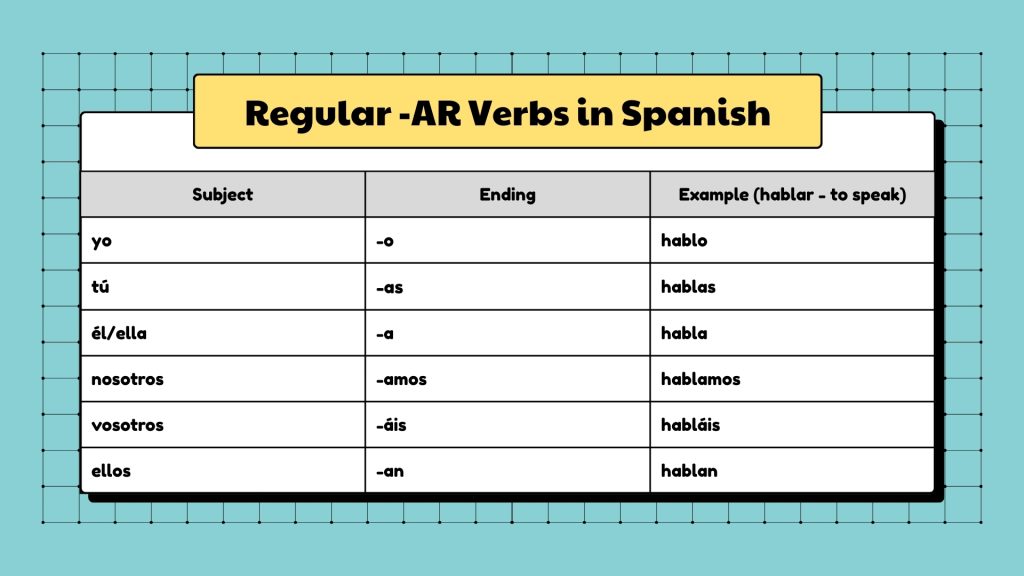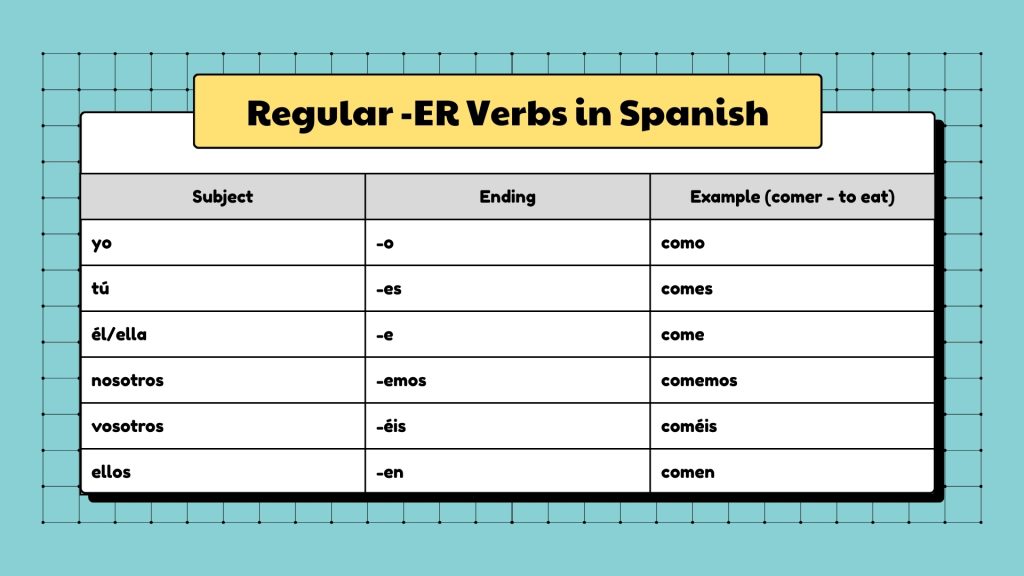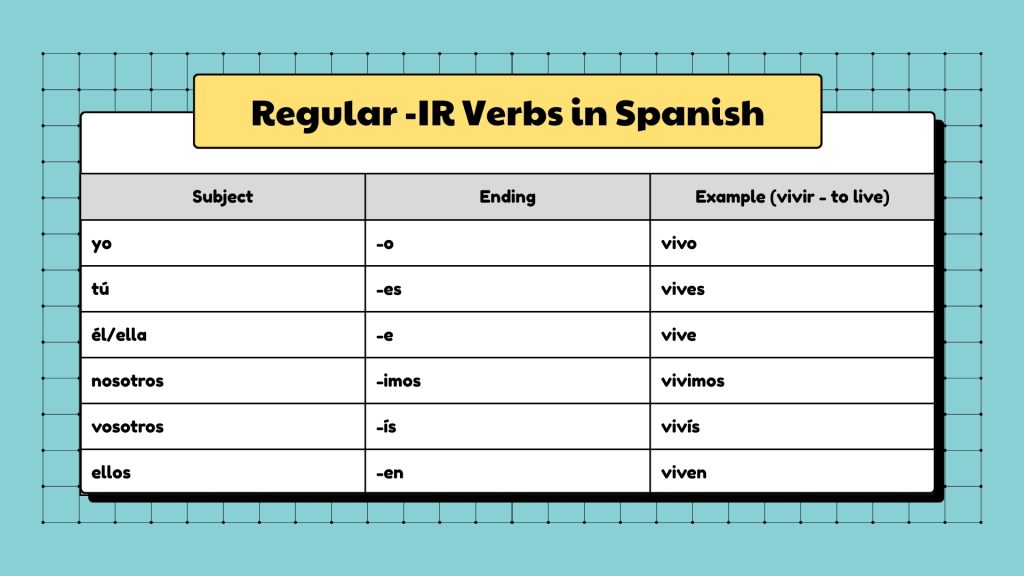You know that moment when you’re feeling super confident about finally learning Spanish… and then the verbs show up like, “Hola, let’s conjugate”? Yeah, same. Regular verbs might sound like the chill ones at the grammar party, but if you’re new to Spanish, even they can feel like they’re speaking another language (well, technically… they are).
If you’ve ever stared at a word like hablar and wondered what the heck to do with it, don’t worry—we’ve got you. This guide is your no-stress, beginner-friendly crash course in regular Spanish verbs. We’re talking what they are, how they work, and why they’re actually your new best friends.
So grab your iced coffee, pretend you’re studying in a cute café in Barcelona, and let’s break this down in a way that finally makes sense. No boring textbooks. No confusing charts. Just clear, simple help—with a side of sass.
Why Learning Regular Verbs Is Essential for Spanish Fluency
Learning regular verbs is one of the fastest ways to start speaking Spanish with confidence. These verbs follow simple, predictable patterns that unlock hundreds of everyday phrases. Mastering them lays a strong foundation for building full sentences and expressing yourself with ease.
Why They Matter
- Regular verbs make up a large part of daily conversations.
- You can apply the same rules to many new verbs once you learn the patterns.
- Helps you focus more on speaking and less on memorizing.
How to Identify Regular Verbs in Spanish
You can spot regular verbs by looking at how they change in different forms. If the root of the verb stays the same and only the endings change, it’s regular. These endings follow set patterns for -AR, -ER, and -IR verbs in the present tense.
Key Signs a Verb is Regular
| Infinitive | Root Stays Same? | Regular? | Example |
|---|---|---|---|
| hablar (to speak) | Yes | ✅ | hablo, hablas |
| comer (to eat) | Yes | ✅ | como, comes |
| vivir (to live) | Yes | ✅ | vivo, vives |
| tener (to have) | No | ❌ | tengo, tienes |
The Three Main Types of Regular Verbs: -AR, -ER, and -IR
Spanish regular verbs fall into three main groups based on their endings: -AR, -ER, and -IR. Each group has its own pattern, but they all share a common structure. Learning one group makes the others easier to pick up.
| Group | Example Verb | English Meaning | Pattern |
|---|---|---|---|
| -AR | bailar | to dance | bailo, bailas, baila |
| -ER | leer | to read | leo, lees, lee |
| -IR | escribir | to write | escribo, escribes, escribe |
Speak like a local: Common AR Spanish words and phrases.
Regular -AR Verbs in Spanish: Rules and Examples
-AR verbs are the most common and easiest to use. The root stays the same, and the endings change based on the subject.

These are often used for basic actions and daily routines.
Conjugation Pattern (Present Tense)
| Subject | Ending | Example (hablar – to speak) |
|---|---|---|
| yo | -o | hablo |
| tú | -as | hablas |
| él/ella | -a | habla |
| nosotros | -amos | hablamos |
| vosotros | -áis | habláis |
| ellos | -an | hablan |
More -AR Verbs with English Meaning :
- bailar – to dance
- trabajar – to work
- estudiar – to study
- cocinar – to cook
- escuchar – to listen
Regular -ER Verbs in Spanish: Rules and Examples
-ER verbs follow a similar pattern to -AR verbs but have their own set of endings.

These verbs often describe more specific or nuanced actions, like thoughts or preferences.
Conjugation Pattern (Present Tense)
| Subject | Ending | Example (comer – to eat) |
|---|---|---|
| yo | -o | como |
| tú | -es | comes |
| él/ella | -e | come |
| nosotros | -emos | comemos |
| vosotros | -éis | coméis |
| ellos | -en | comen |
More -ER Verbs with English Meaning :
- beber – to drink
- aprender – to learn
- leer – to read
- correr – to run
- comprender – to understand
Regular -IR Verbs in Spanish: Rules and Examples
-IR verbs have similar endings to -ER verbs, with small changes in the nosotros and vosotros forms.

These verbs often express movement, feelings, or states of being.
Conjugation Pattern (Present Tense)
| Subject | Ending | Example (vivir – to live) |
|---|---|---|
| yo | -o | vivo |
| tú | -es | vives |
| él/ella | -e | vive |
| nosotros | -imos | vivimos |
| vosotros | -ís | vivís |
| ellos | -en | viven |
More -IR Verbs with English Meaning :
- escribir – to write
- abrir – to open
- recibir – to receive
- decidir – to decide
- compartir – to share
Master the Spanish Riddles: Fun Brain Teasers for Language Learners with this must-read guide!
How to Conjugate Regular Verbs in the Present Tense
Learning to conjugate regular verbs in Spanish is the first step toward holding a simple conversation. The present tense is used to talk about things happening now or often. You only need to know the endings for -ar, -er, and -ir verbs to get started.
| Verb Ending | Yo | Tú | Él/Ella/Usted | Nosotros/as | Vosotros/as | Ellos/Ellas/Ustedes |
|---|---|---|---|---|---|---|
| -ar (hablar) | hablo | hablas | habla | hablamos | habláis | hablan |
| -er (comer) | como | comes | come | comemos | coméis | comen |
| -ir (vivir) | vivo | vives | vive | vivimos | vivís | viven |
Conjugating Regular Verbs in the Past and Future Tenses
To speak about the past or make future plans in Spanish, you need to master two more tenses. The good news? Regular verbs follow clear rules in both cases. That means no surprises once you learn the endings.
| Verb Ending | Yo | Tú | Él/Ella/Usted | Nosotros/as | Vosotros/as | Ellos/Ellas/Ustedes |
|---|---|---|---|---|---|---|
| -ar (hablar) | hablé | hablaste | habló | hablamos | hablasteis | hablaron |
| -er (comer) | comí | comiste | comió | comimos | comisteis | comieron |
| -ir (vivir) | viví | viviste | vivió | vivimos | vivisteis | vivieron |
Examples of Common Regular Verbs Used in Everyday Spanish
These regular verbs appear in daily life. Learn them to talk about your routine, thoughts, meals, and more.

Top Regular Verbs
- hablar – to speak
- comer – to eat
- vivir – to live
- estudiar – to study
- trabajar – to work
- caminar – to walk
- correr – to run
- escribir – to write
- leer – to read
- limpiar – to clean
Spanish Sentences Using Regular Verbs
Here are simple but useful sentences. They include verbs in the present, past, and future tenses. Each comes with its English meaning to help you follow along.
| Spanish Sentence | English Meaning |
|---|---|
| Yo hablo con mi mamá cada día | I speak with my mom every day |
| Ella estudia en la biblioteca | She studies in the library |
| Nosotros comimos pizza anoche | We ate pizza last night |
| Ellos caminarán al parque mañana | They will walk to the park tomorrow |
| Tú escribes muy bien | You write very well |
| Vivimos en una casa pequeña | We live in a small house |
| Él corrió cinco kilómetros | He ran five kilometers |
| Ustedes limpiarán la cocina más tarde | You all will clean the kitchen later |
| Yo leí un libro interesante | I read an interesting book |
| Vosotros trabajáis en el centro | You all work downtown |
Conclusion
Look at you—conjugating like a pro already! Or at least not crying over verb endings anymore, which is a total win in our book.
Regular verbs in Spanish might’ve seemed like a mystery wrapped in a telenovela plot twist, but now you know they actually play by the rules (unlike those wild irregular ones). Once you get the hang of the patterns, it’s all about practice—and maybe saying comer, vivir, and hablar out loud until your dog starts giving you side-eye.
So next time a regular verb tries to throw you off, you’ll be ready with your -ar, -er, and -ir endings locked and loaded. Go forth and conjugate, my friend—you’ve got this!
To read more articles, keep visiting Lingua Viva .
Born in Cali, but raised in London, Juan Pablo has led an interesting life. He has an undergraduate degree in Foreign Language and 10+ years of experience. Juan Pablo has taught and worked as a professor and interpreter in Spanish, English, and French languages. He prides himself on having a ‘situational teaching style’, which means he caters lessons to fit student needs. He is serious about teaching, responsible, professional, clear, and concise.











